Seed Grant 2025 Recipients
Meet our 2025 Seed Grant recipients! Each of these leading laboratories will receive no-cost access to the available inventory of Amnion Foundation cells and reagents to support high-impact projects in drug development, toxicology, and regenerative medicine.
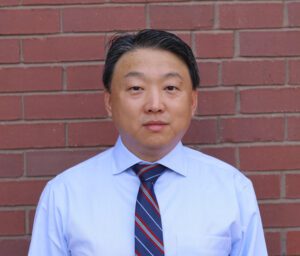
Yi Zheng
DR. YI ZHENG – SYRACUSE UNIVERSITY
Dr. Yi Zheng, Assistant Professor at the Syracuse University, has been selected as the recipient of the Amnion Foundation Seed Grant (AFSG) award to study human placental development and the underlying causes of inadequate placentation.
Embryo implantation into the maternal uterus is a pivotal step in human reproduction. However, limited access to human placenta in situ, particularly at early and mid-gestation stages, has constrained our capability to study human placental development and the underlying causes of inadequate placentation. As a result, the complex processes of dynamic morphogenesis, extensive cell lineage diversification, and large-scale cell migration during human placental development remain poorly understood. Animal models have been employed to investigate placental morphogenesis and dysfunctions across gestational stages. Yet, significant cross-species differences, even with non-human primates such as macaques, hinder the direct translation of findings to humans. Additionally, animal models are unsuitable for high-resolution live imaging, further limiting their utility. Experimental studies using carcinoma-derived trophoblast cell lines have focused on extravillous trophoblast (EVT) cell migration and adhesion between trophoblasts and the maternal endometrium. However, these cell lines are derived from cancerous sources, exhibit restricted differentiation potential, and correspond to unknown developmental stages, making them unsuitable for studying normal human placental development. This highlights a critical need for quantitative, human-relevant placenta models to explore the physiological mechanisms governing placental development and the pathological factors contributing to placental dysfunction. To address these challenges, this study proposes the development of placenta organoids using primary cytotrophoblasts seeded into a specially designed microfluidic device. These cells will cluster and self-organize into placenta organoids within the compartmentalized microfluidic system. A concentration gradient of neuregulin-1 (NRG1) will be introduced to induce EVT differentiation and support the continuous development of placenta organoids. By modulating experimental conditions, we aim to induce the formation of placental villus-like structures. Furthermore, the platform will be used to evaluate the influence of endothelial cells, endometrial cells, and Hofbauer cells on EVT invasion and the interactions between EVTs and endothelial cells. This study aims to establish a tractable experimental platform to advance our understanding of human placental development and its associated complications.
The Zheng Lab: https://yzheng.syr.edu/
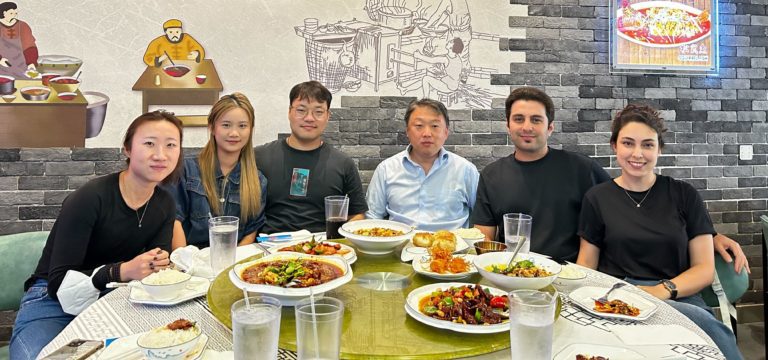

Jacqueline B. Tiley
DR. JACQUELINE B. TILEY – UNIVERSITY OF NORTH CAROLINA AT CHAPEL HILL
Dr. Jacqueline Tiley, Assistant Professor at the University of North Carolina at Chapel Hill, in the Division of Pharmacotherapy and Experimental Therapeutics, has been selected as the recipient of the Amnion Foundation Seed Grant (AFSG) award to advance models to predict fetal drug exposure by measuring critical placental transport proteins using quantitative targeted proteomic analysis.
The placenta, the interface between mother and fetus, relies on transport proteins to deliver essential nutrients and hormones to the fetus while protecting the fetus from drugs and toxins. Gene expression analysis has shown that many of these transporters are upregulated during the process of syncytialization, but little is known how syncytialization impacts the transport protein level and function. In addition, the transport protein levels in microvascular endothelial cells are unknown. Many human in vitro models currently use syncytiotrophoblast and microvascular endothelial cells in the absence of this information.
In addition, 39% of women in childbearing age have a chronic condition and may take medication regularly. Physiologically based pharmacokinetic (PBPK) models are utilized to predict maternal drug disposition and fetal exposure, but these models do not yet have enough information regarding gestational changes or the effects of disease and drugs on the placenta during pregnancy. With our targeted proteomic methods, we measured 36 SLC and 10 ABC transporters in three placenta cell lines (JAR, BeWo, and HTR8/SVneo) and placenta tissue and were able to detect most of the transporters in all samples. However, there were differences between cell lines and compared to clinical placenta tissue collections.
In this grant application, we propose extending the work to evaluate 1) the transporter proteome in term cytotrophoblasts, syncyiotrophoblasts, and microvascular endothelial cells, and 2) the effect of high glucose (mimicking gestational diabetes) on transport protein concentrations in syncytiotrophoblasts. This is important to translate our work from in vitro functional studies to accurately predict in vivo fetal drug exposure.
Dr. Tiley plans to use the funds provided by the AFSG award to obtain primary cytotrophoblasts and microvascular endothelial cells to measure transporter proteome in cytotrophoblast, syncytiotrophoblasts and microvascular endothelial cells under different conditions.
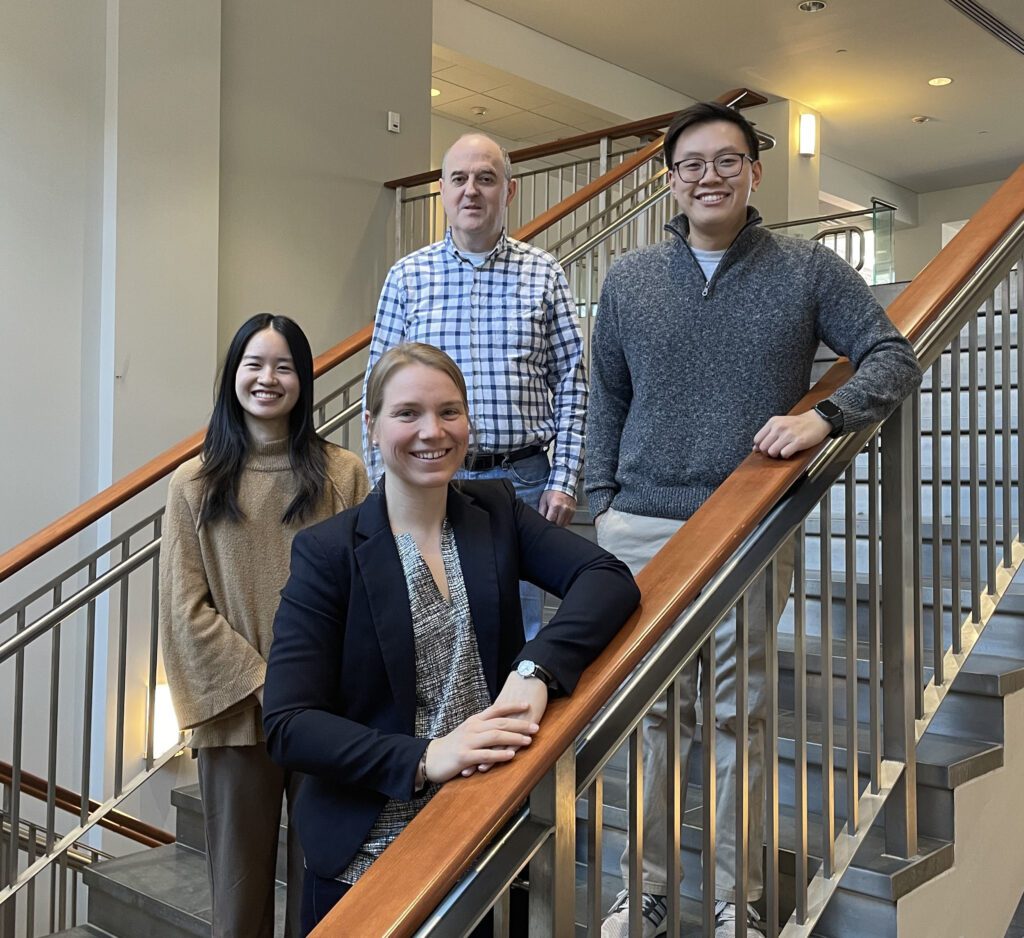

Cristina Antich Acedo

Cristina Antich Acedo
CRISTINA ANTICH ACEDO – NATIONAL CENTER FOR ADVANCING TRANSLATIONAL SCIENCES
Dr. Cristina Antich Acedo, Postdoctoral Researcher, with the National Center for Advancing Translational Sciences (NCATS) has been selected as the recipient of the Amnion Foundation Seed Grant (AFSG) award to development a bioengineered human placental model to examine sex-biased pathologies.
Long-term health and the risk of contracting diseases later in life are influenced by the placental environment. The type of insult, the duration of fetal exposure to the compromised environment, and the gestational timing of the insult all impact the development of adverse postnatal outcomes and severity in these situations. During pregnancy, it has been observed that male fetuses are subject to increased earlier onset and severity of disease phenotypes, including early preterm birth, term preeclampsia, placental inflammation or premature rupture of membranes. Meanwhile, female fetuses have been reported to be more susceptible to other complications during pregnancy, such as preterm preeclampsia or intrauterine growth restriction across diverse populations, indicating that sex-biased prenatal vulnerability may present in distinct and context-specific manners. The findings support the fact that male fetuses and placentas prioritize growth to the detriment of themselves and the mother, in contrast to female placental cells, which emphasize responsiveness to environmental factors and immunological functionality. However, the biological mechanisms by which fetal sex influences prenatal development have yet to be elucidated. Considering the restricted accessibility and ethical regulations of monitoring pregnant women, there is an extreme need to develop predictive models for better understanding mechanistically how fetal sex drives these differences, as these observations may unlock insight into the foundations of sex-biased pathologies that emerge later in life. In our lab, we have bioengineered a novel biomimetic in vitro 3D human placenta model (3D hPB) at various gestational phases, in a high throughput format, using 3D bioprinting technology. In order to replicate the key elements of the placenta, we bioprinted trophoblast cells and stromal cells (fetal vasculature) on opposite sides of trans-well inserts on a 96-well format platform. The resemblance to the human placenta was verified using gene expression and proteomic analysis, as well as immunostaining experiments. The functionality of the placenta was confirmed by barrier integrity assays (transepithelial electrical resistance and paracellular transport), nutrients uptake and drug efflux studies, using fluorescent intensity measurements, and enzyme linked immunosorbent assays (ELISA) to evaluate different hormone and cytokine secretion. Our new project will involve the recreation of the 3D hPB at different stages using placental cells derived from several male and female donors. First, we will identify the differences between male and female 3D hPB at different stages by genomic and proteomic and functional studies, which includes barrier integrity, nutrients uptake, drug efflux, hormone and cytokine secretion assays. Secondly, we will expose the male and female placenta models to pathological conditions, including undernutrition/high fat diet, stress (cortisol/corticosteroids) and infection (LPS/Poly-L-C), and investigate genomic, proteomic and functional changes, compared to unexposed (healthy) model at each stage of gestation. Finally, we will evaluate potential therapeutic strategies in those disease placenta models based on the targets identified here. All these findings would benefit the early diagnose and treatment of sex-biased obstetrical complications.
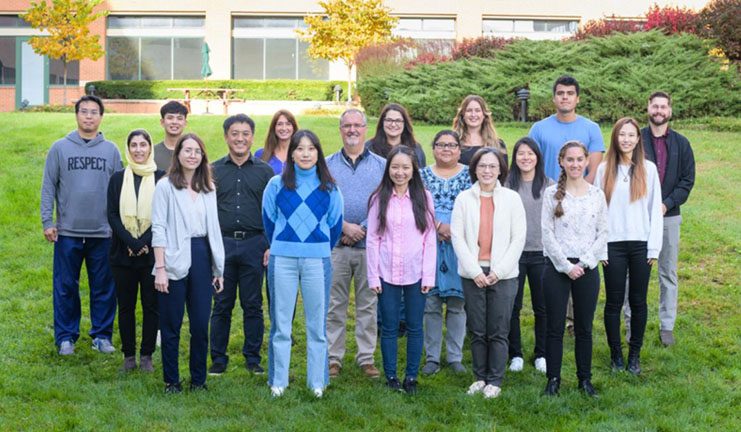

Khursheed Iqbal

Khursheed Iqbal
KHURSHEED IQBAL – OKLAHOMA STATE UNIVERSITY
Dr. Khursheed Iqbal, Assistant Professor at Oklahoma State University has been selected as the recipient of the Amnion Foundation Seed Grant (AFSG) award to examine how endocrine disruptors affect the molecular cascades of placental cells.
The placenta represents a critical interface controlling the exchange of nutrients, oxygen, and waste products between the maternal and fetal circulations, placing it in a central role in influencing maternal, fetal, and postnatal health. The placenta not only provides structural anchorage for the developing fetus but also functions as a selective barrier, shielding the fetus from harmful xenobiotic chemicals and pathogens. Additionally, the placenta produces hormones that regulate maternal physiology and support fetal development. Impaired placental development, structural or functional placental abnormalities are associated with pregnancy complications such as preeclampsia, intrauterine growth restriction, and preterm birth, which may compromise fetal health and growth.
Harmful environmental chemicals, such as pollutants, can break placental barrier, impair normal placental functions, and exacerbate pregnancy-related disorders affecting fetal development. Despite its importance, the impact of environmental exposures on placental development and function has been understudied, highlighting a critical area for future research.
Endocrine disruptors (EDs) are ubiquitous synthetic xenobiotic chemicals that can mimic or block hormones, disrupting the body’s normal functions even at very low concentrations. These compounds bind to nuclear receptors, either activating or blocking downstream cell signaling pathways. Persistent organic pollutants, such as dioxins, PCBs, PCDDs, and PCDFs, disrupt cellular gene expression by binding to and activating the aryl hydrocarbon receptor (AHR). Using in vivo rodent genetic models and human in vitro cell cultures, we previously demonstrated that: a) the AHR pathway is active in various placental cell types, and b) gestational activation of the AHR pathway by xenobiotic exposure alters uterine and trophoblast cell dynamics, molecular profiles, and the formation of the hemochorial placenta. Additionally, our single-cell experiments in rodents revealed that different placental cell types—such as trophoblasts, macrophages, endothelial cells, NK cells, and smooth muscle cells—respond differently to AHR activation or environmental exposure and trigger cell type specific gene expression program. Most studies have focused on the whole placenta; however, the specific responses of various human placental cell types to ED exposure remain unknown. The Amnion Foundation Seed Grant will grant us access to invaluable and difficult-to-derive human primary placental cell lines, enabling the investigation of molecular and cellular disruptions caused by environmental exposures and the exploration of potential molecular strategies to mitigate their effects. We will use advanced molecular techniques and innovative cell culture models, such as 3D organoid systems, to dissect the disrupted molecular and cellular pathways. Additionally, this project will generate a comprehensive molecular atlas detailing the responses of diverse placental cell types to ED exposures. The proposed research aims to elucidate: 1) the molecular effects of these pollutants on diverse human placental cell types, 2) how intercellular communication and interactions are disrupted, and 3) the resulting changes in the phenotypes and functions of these cell types.
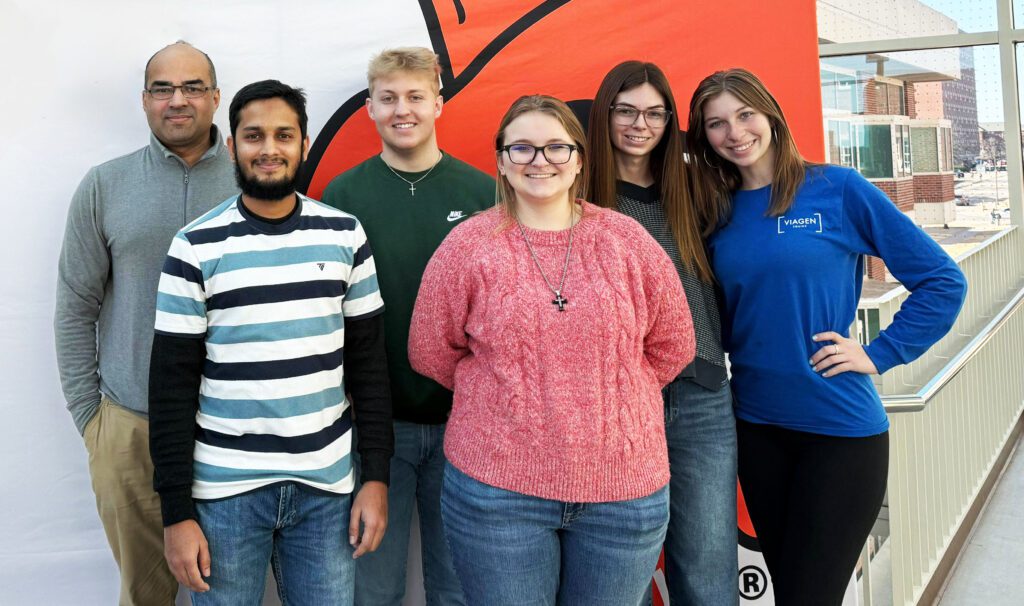
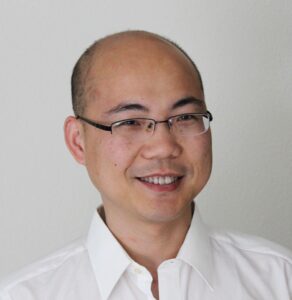
Huanghe Yang
HUANGHE YANG – DUKE UNIVERSITY
Dr. Huanghe Yang, Assistant Professor at Duke University has been selected as the recipient of the Amnion Foundation Seed Grant (AFSG) award to advance models to examine the role of the newly discovered TMEM16F and its role in trophoblast fusion in a primary placental cell model.
The placenta is an extraordinary organ that supports pregnancy by delivering oxygen and nutrients to the growing baby, removing waste, and producing essential hormones. A critical part of the placenta is the syncytiotrophoblast (STB), a unique outer layer of cells that directly contacts the mother’s blood. STBs are formed when individual cells, called cytotrophoblasts (CTBs), fuse together—a process known as trophoblast fusion. This fusion is vital for the placenta to develop and function properly. When it goes wrong, serious pregnancy complications can occur, such as preeclampsia, intrauterine growth restriction, and placental insufficiency. Despite its importance, we know surprisingly little about how trophoblast fusion happens, which has slowed the development of therapies to prevent or treat these complications.
In 2020, our team made an exciting discovery. We identified a protein called TMEM16F that plays a key role in trophoblast fusion. TMEM16F helps rearrange lipids in the cell membrane in response to calcium, a process essential for trophoblasts to merge. When TMEM16F is missing, trophoblast fusion fails, causing complications such as fetal growth restriction and pregnancy loss in mouse models. This discovery revealed a new and previously unrecognized mechanism for how trophoblast fusion occurs.
More recently, we uncovered two specialized calcium channels in trophoblasts that respond to mechanical forces. These channels provide the calcium needed to activate TMEM16F and drive trophoblast fusion. Our findings open up an exciting new area of research into the mechanobiology of the placenta—how physical forces and cellular mechanics influence placental development and function.
So far, our work has mainly relied on trophoblast cell lines and mouse models. While these findings are promising, it is crucial to confirm them in human placental cells. With support from the Amnion Foundation’s Seed Grant, we plan to investigate how these force-sensitive calcium channels and TMEM16F interact in primary human trophoblasts and other placental cells. By studying human cells directly, we aim to uncover how these mechanisms contribute to healthy placental development and how they might be targeted to treat or prevent pregnancy complications. This research could pave the way for groundbreaking therapies to improve outcomes for mothers and babies affected by placental dysfunction.
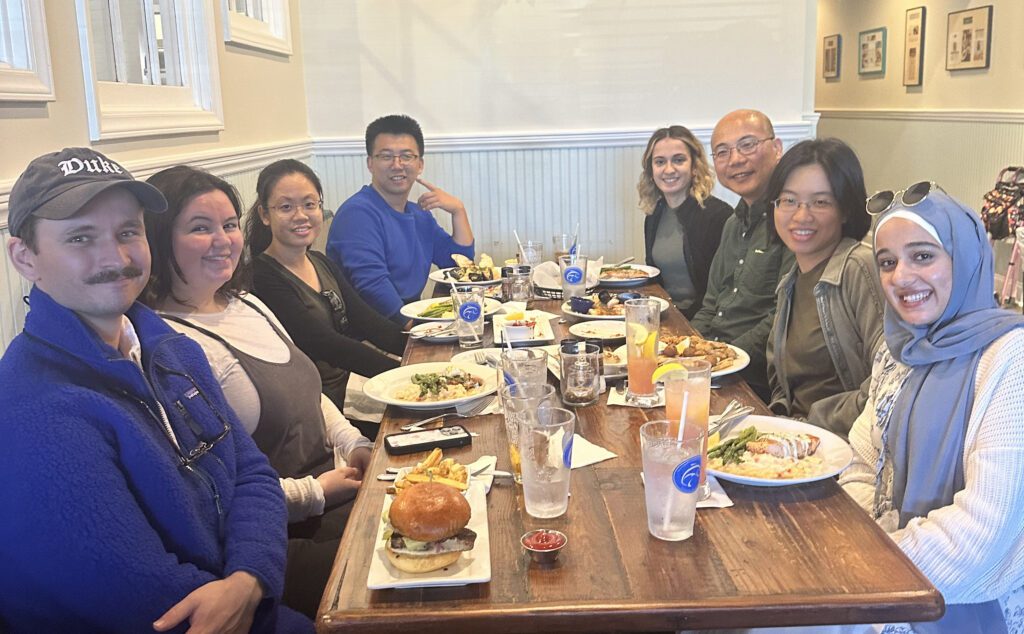

Subhash Chand
DR. SUBHASH CHAND – UNIVERSITY OF NEBRASKA MEDICAL CENTER

Subhash Chand
Dr. Subhash Chand, Assistant Professor at the University of Nebraksa Medical Center, has received an Amnion Foundation Seed Grant (AFSG) to examine the role of placental cell extracellular vesicles may play in the treatment of various cardiac pathologies.
Mesenchymal stem cell (MSC) therapy has gained much interest in treating injuries and various diseases in recent decades. The therapeutic properties of MSCs are believed to be derived from their paracrine activity via extracellular vesicles (EVs). EVs are nano-sized membrane-bound vesicles that transfer biomolecules between cells to maintain their physiological homeostasis. Using MSC-EV as an alternative to MSCs is advantageous due to their lower immunogenicity, higher safety profile, and ability to cross biological barriers. MSC-EVs are a promising tool in regenerative medicine as they can deliver therapeutic molecules such as proteins, RNA, and lipids to the target cells. MSC-EVs can treat cardiac diseases and injuries by enhancing angiogenesis, reducing fibrosis and inflammation, and supporting cardiomyocyte survival. Moreover, they improve cardiac function after injury by reducing cell death and increasing vascularization. Various studies have shown that MSC-EVs have anti-inflammatory and regenerative properties. This pilot project will explore the potential of MSC-EVs in therapeutics and targeted drug delivery for cardiac repair. We aim to present a proof of concept for the efficient production, characterization, cargo enrichment and targeted delivery of MSC-EVs to the heart cells in vitro and in vivo.

